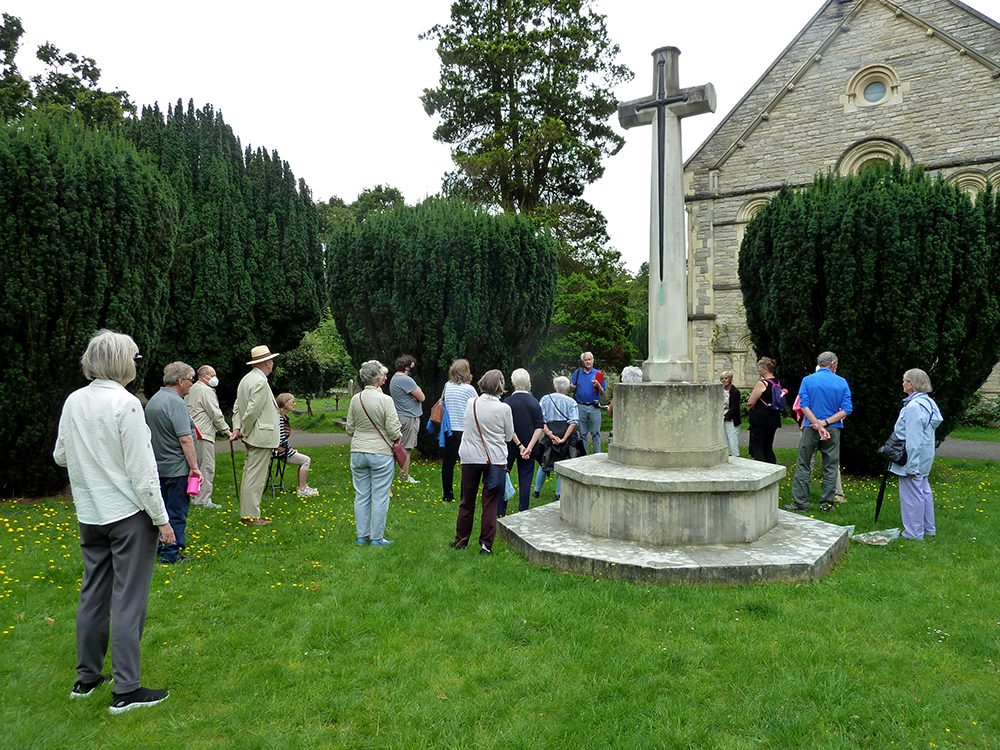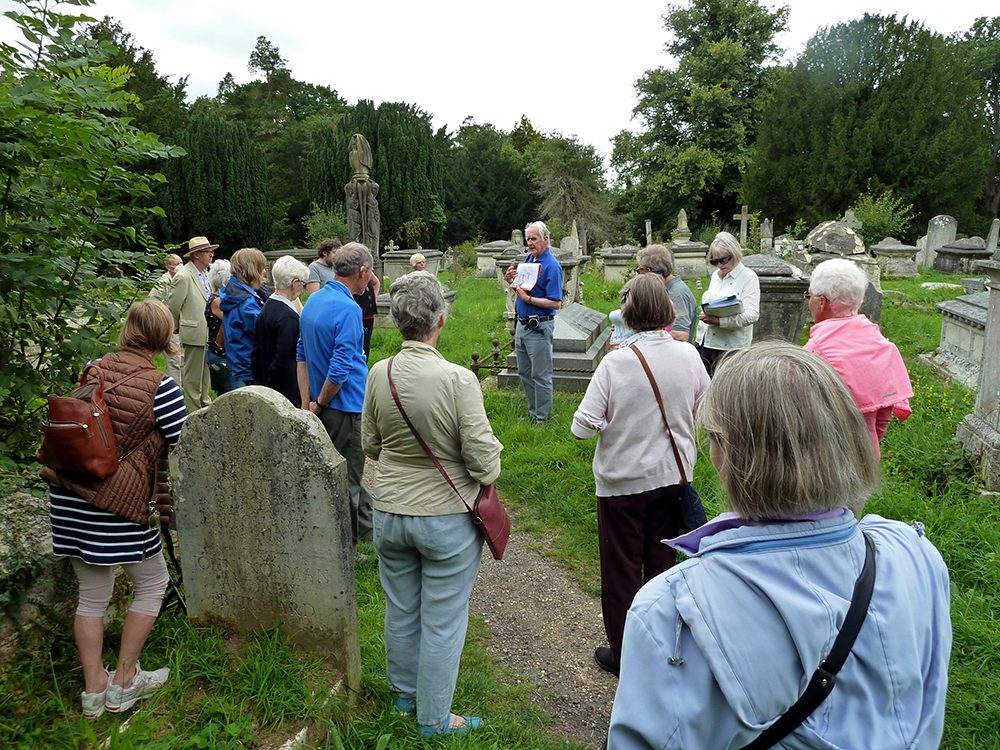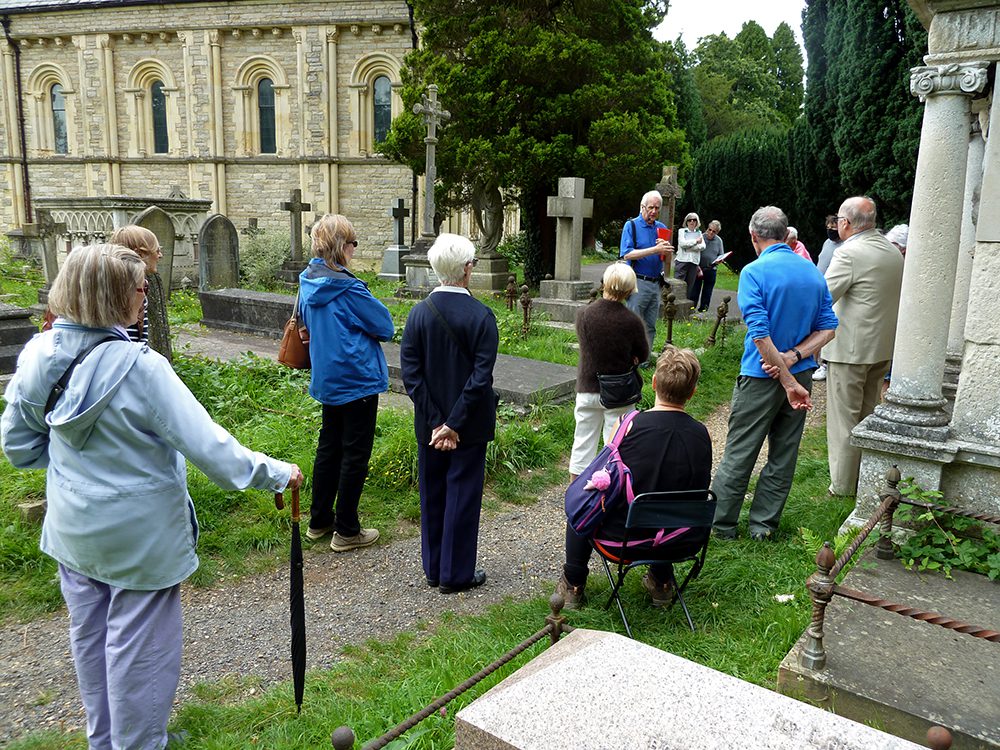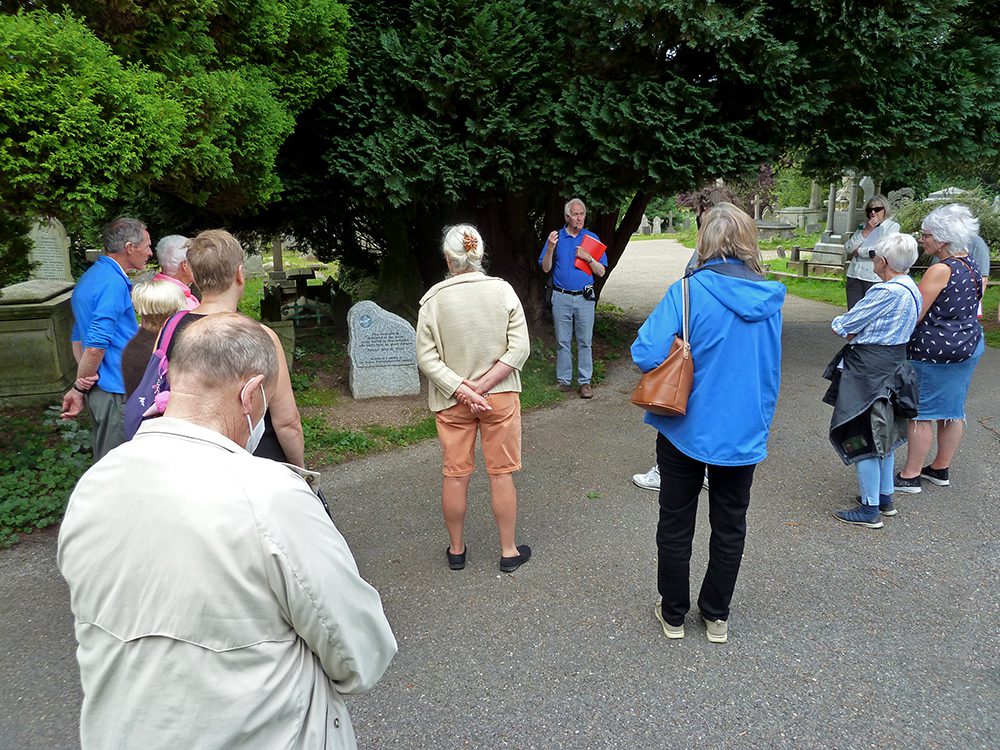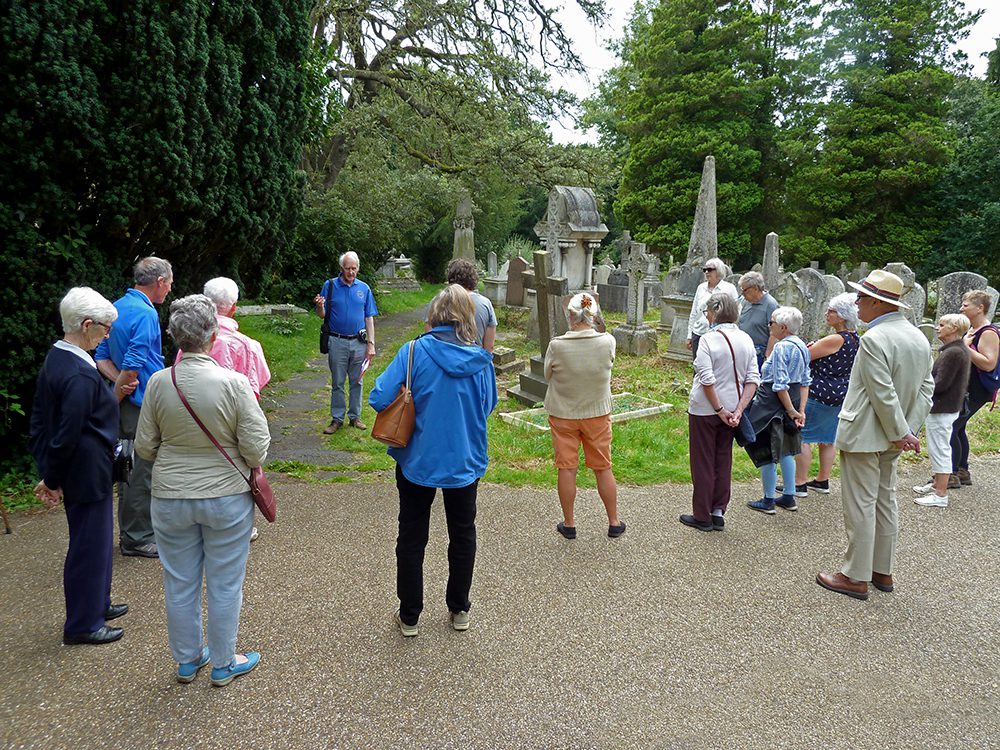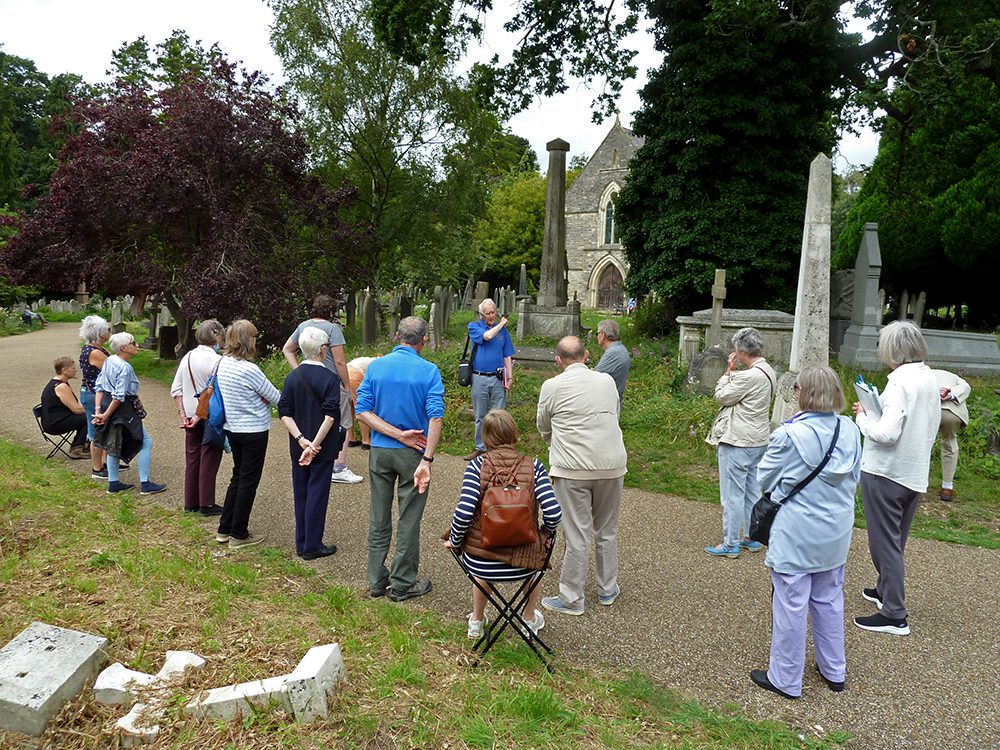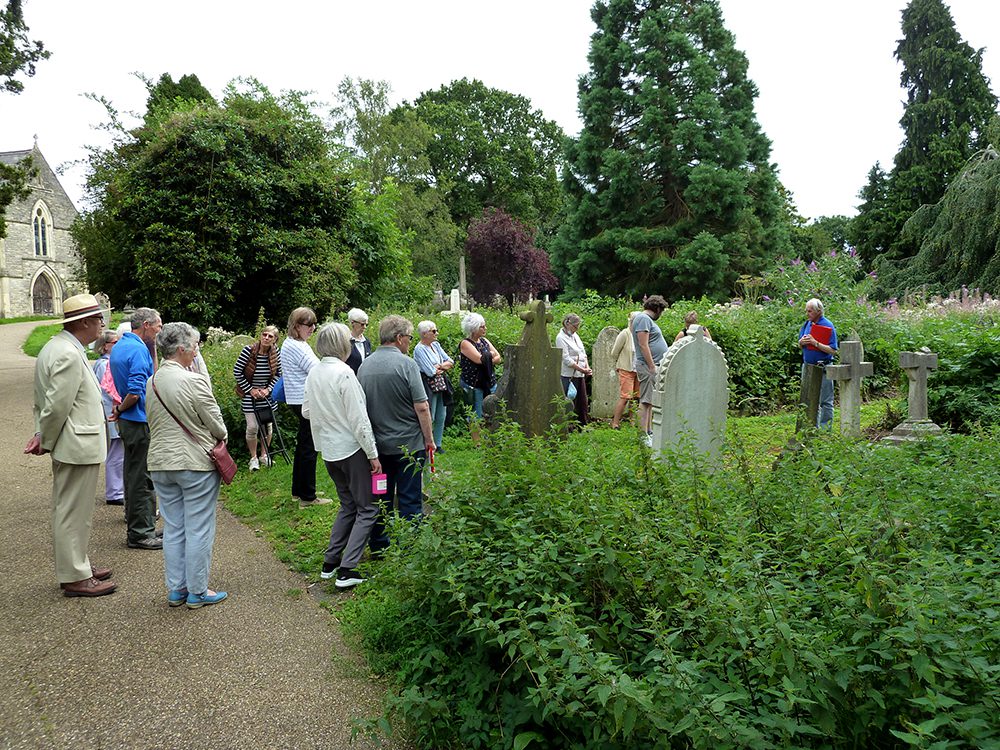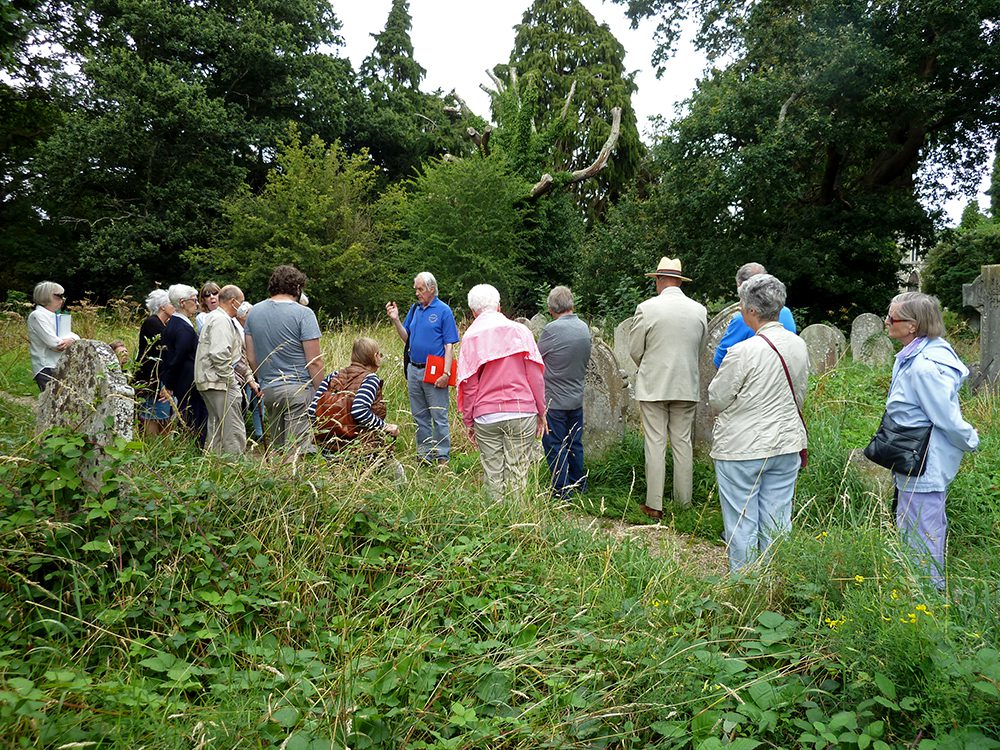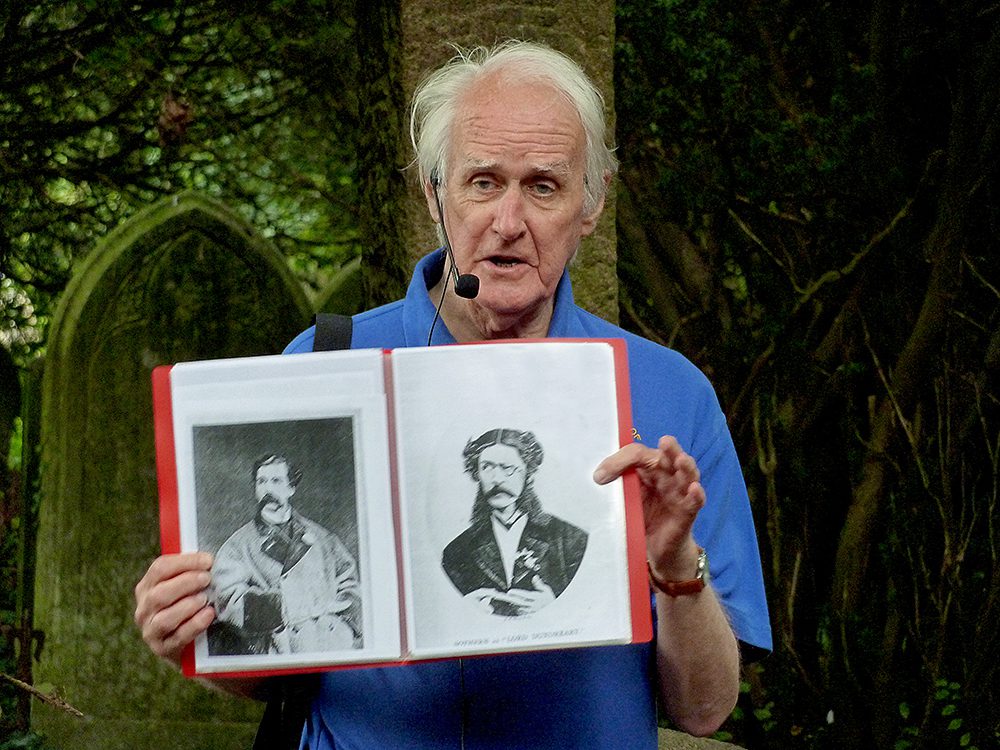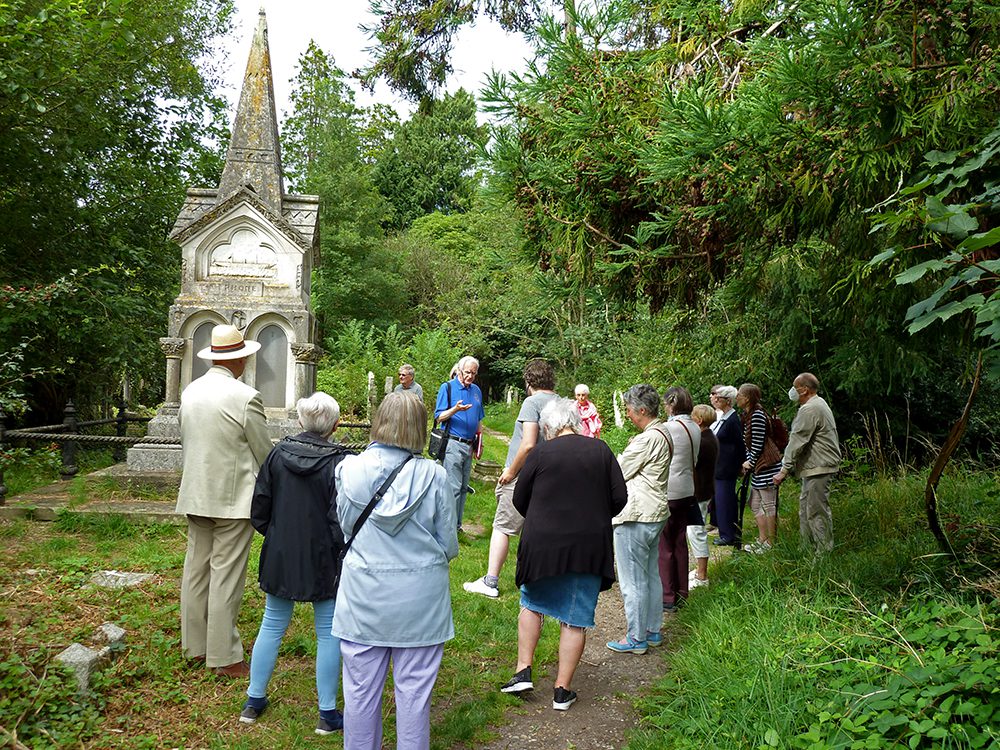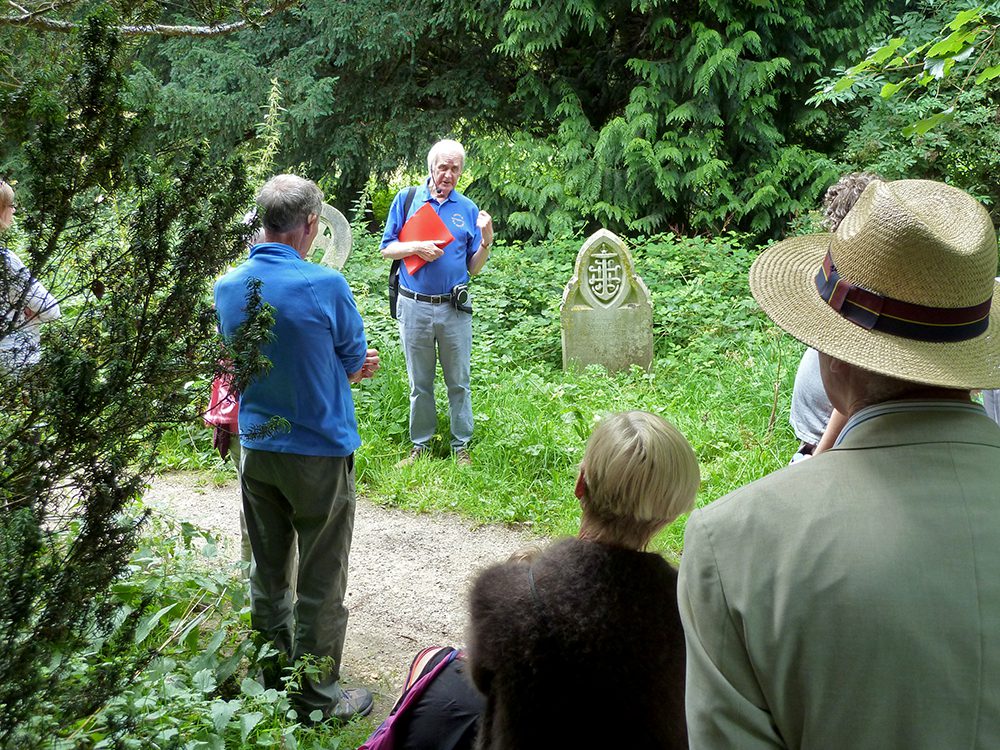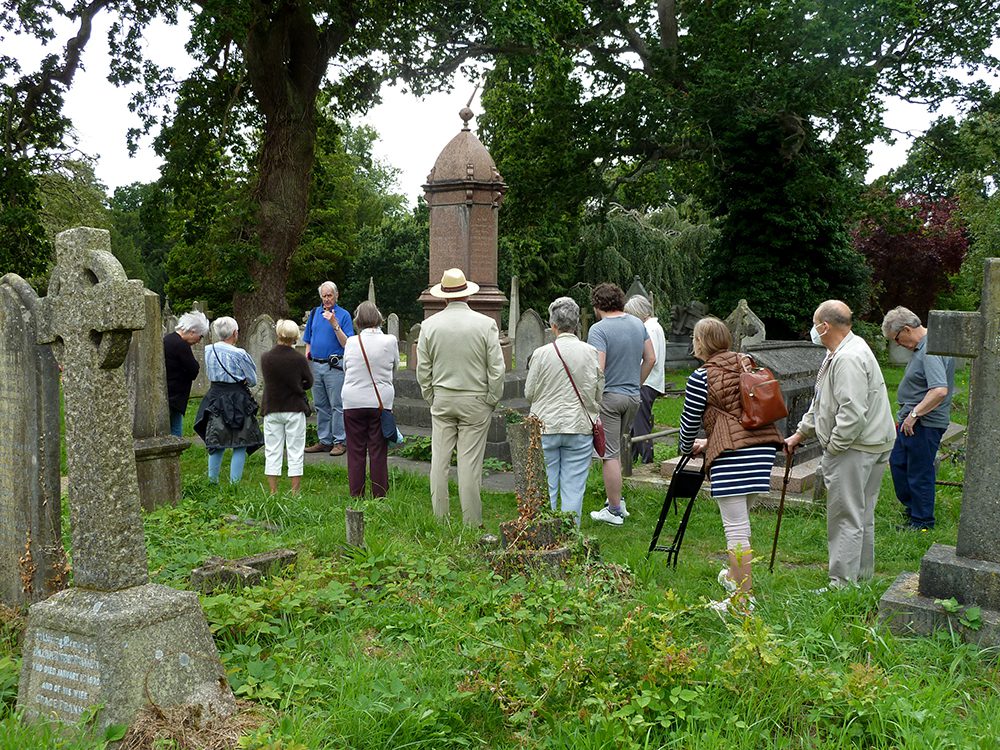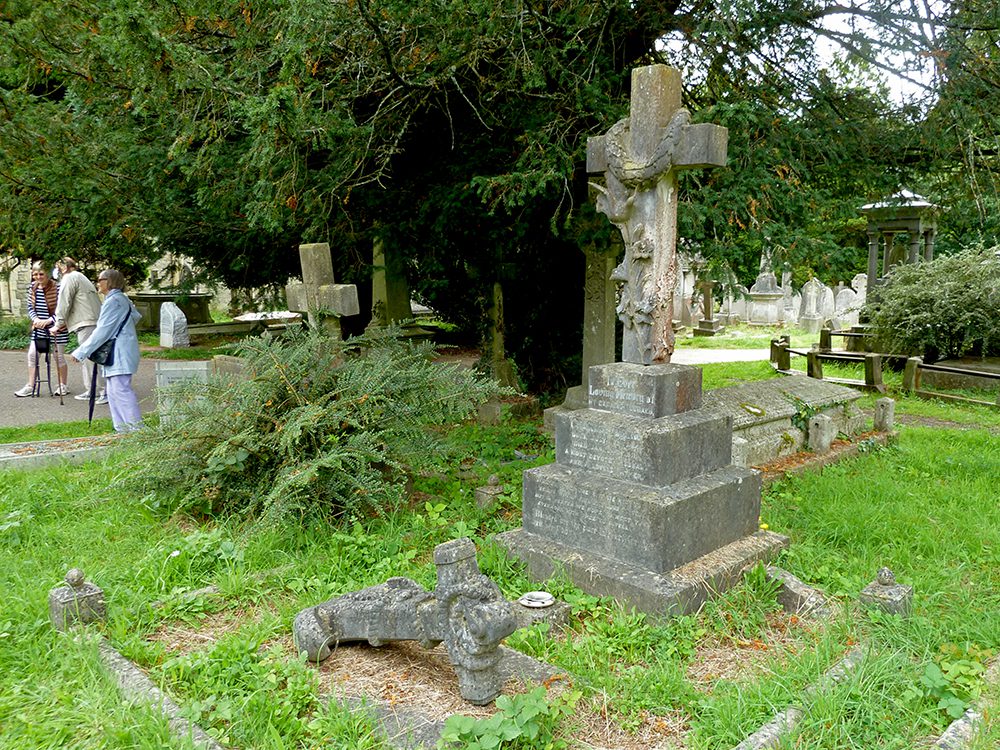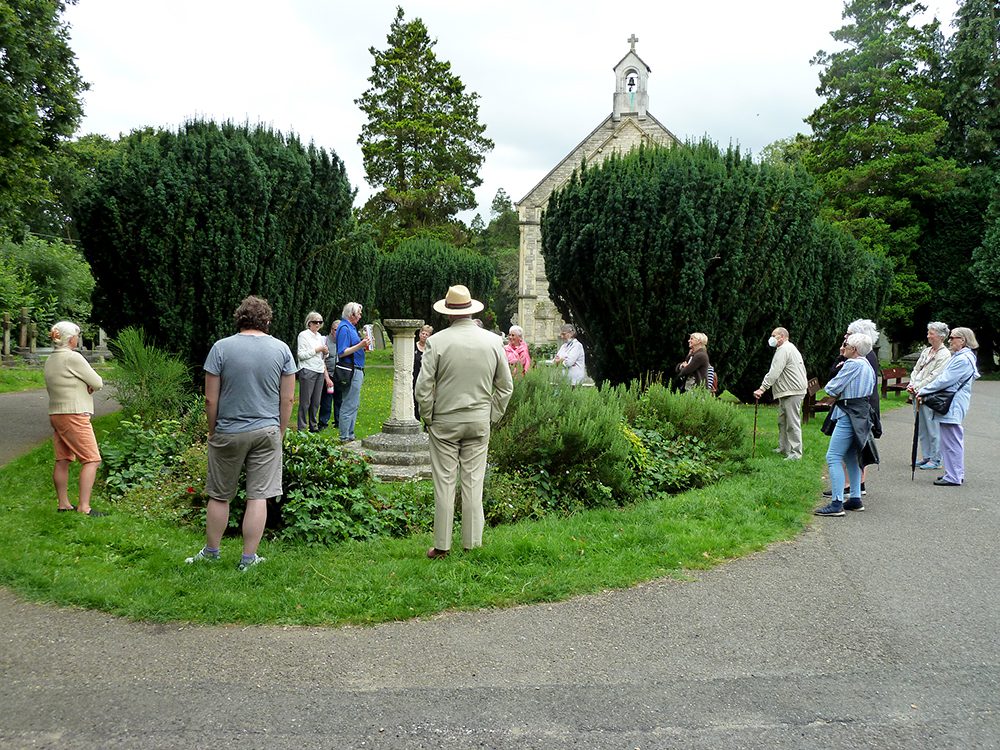Southampton American Connection
Twenty-one people attended Geoff’s ‘American Connections’ Walk on 15 August dedicated, by Geoff, to our late – and much missed – member, David Palmer (photo: David and Geoff, November 2015). Pausing at the new memorial stone for those with no marker, Geoff explained the reasons for it and the generosity of the anonymous donor. Appreciation was shown with a round of applause. Some pathways and sites visited had been cleared, specially, by FoSOC members Bruce and Tim. Tim strimmed a section that included one of the selected graves. For Joseph Koepfli, Bruce had uncovered the lower part of the stone marker that had sunk into the ground.
Subjects covered varied considerably from opposition to the slave trade (Rev. Thomas Adkins) to the Mayflower (Pilgrim Fathers’) Memorial told at William Bagshaw (Sheriff of Southampton 1913), 15th August being the 401st anniversary of the departure, from Southampton, of Mayflower and Speedwell. Charles Barr won the America’s Cup three times for the Americans and happened to die in Southampton. At Henry Shrimpton, who died of Yellow Fever, we learned how American US Army Physician, Major Walter Reed, had followed up Cuban research and discovered how the disease was transmitted. By American Consul William Thomson, Geoff corrected a slur on his name made in 1869 – not by anyone in, or from, Southampton!
Ubsdell took us to the Mississippi River and James Buchanan Eads (‘one of the greatest engineers of all times’) who designed and built a fine bridge over the river and solved the problem of silting up affecting the river. The tragic death of Fireman Daniel Flynn of the USS Shamrock, while at Southampton, was extended to tell the story of the ship during the American Civil War.
Communication featured through the death of Abraham Lincoln – told at the grave of actor Edward Sothern – famous for creating the character of Lord Dundreary in ‘Our American Cousin’ – who was a great favourite in America. This theme was developed, at the memorial to the Royal Mail ships, Rhone and Wye, with the role of Sir Richard Glass (buried at the cemetery), in the manufacture of the Atlantic cable. Development of the telephone, invented in America, came at the memorial to Sir William Preece who brought the first examples to Britain. Tribute was paid to his work in helping Marconi with experiments that led to wireless telegraphy between Britain and America.
Southampton’s American Civil War connections came through the stories of the Confederate ‘raiders’, Nashville and Alabama. Nashville was the first Confederate ship to come into a British port, here in Southampton, the ship being visited by Mayor Frederick Perkins. Captain Raphael Semmes, Executive Officer John Kell and others from the Alabama – sunk off Cherbourg by the Northern warship Kearsarge – were rescued by a British yacht and brought to Southampton. Here, Semmes, a ‘most wanted man’ because of the losses to Northern merchant shipping caused by the Alabama, and Kell, stayed in Robert Kelway’s hotel and were visited, there, by important Confederate figures. Samuel Wiseman’s famous photographs of Semmes, Kell and Southampton doctor, John Wiblin, were shown at Wiseman’s grave and Wiblin’s role in tending to Semmes’ hand, injured in the battle, was told at Wiblin’s grave.
Joseph Koepfli was a Swiss founder of the town of Highland, Madison County, Illinois. Special mention was made of Colleen Cockroft of U3A, through whom we are now in contact with people in America and Switzerland. The Koepfli story will be told in a future Newsletter.
A new fact that emerged, from Geoff’s researches, was that the Stars and Stripes had once flown over the Bargate, another article for the Newsletter! Geoff’s walk was rewarded with a round of applause at the end, greatly appreciated by him. This walk, as with all others we offer, is available for groups.
All photos – grateful thanks to Bruce Larner
